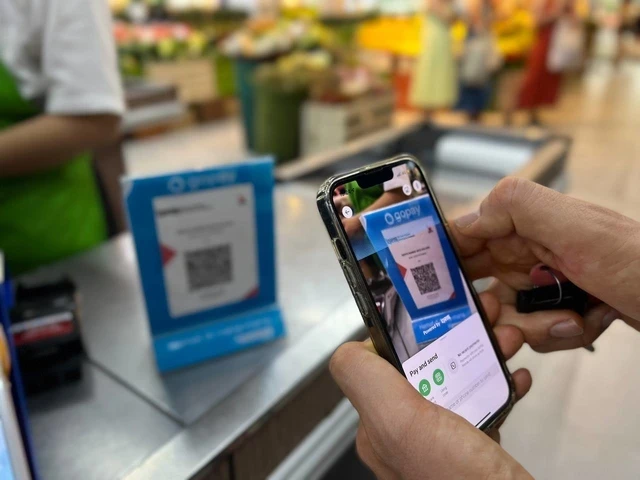In Indonesia, the QRIS system (Quick Response Code Indonesian Standard) has become the standard for cashless payments using QR codes. A new payment system, QRIS Tap, was officially launched on March 7, 2025. This innovative solution, developed by the Bank of Indonesia (BI), allows payments to be made without physical cards, simply by bringing a smartphone close to the terminal.

The payment is automatically deducted from the linked account or e-wallet. Let's examine the differences between traditional QRIS and QRIS Tap, along with their advantages and disadvantages.
Traditional QRIS
The traditional QRIS method involves the user scanning the merchant's QR code with the smartphone camera through a mobile banking app or e-wallet. After scanning, the user enters the payment amount and confirms the transaction. This method is widely used and supported by most banks and payment applications.
Advantages of Traditional QRIS:
- Wide compatibility: supported by most smartphones and apps, requiring no special hardware capabilities.
- Versatility: can be used in various sectors, from retail to public transport.
Disadvantages of Traditional QRIS:
- Transaction speed: the need to open an app, activate the camera, and scan the code can slow down the payment process.
- Dependence on environmental conditions: poor lighting or a damaged QR code can hinder scanning.
QRIS Tap
QRIS Tap is an innovation introduced by the Bank of Indonesia that uses Near-Field Communication (NFC) technology to conduct payments. Users can simply bring their NFC-enabled smartphone close to the merchant's terminal to execute the transaction without the need to scan a QR code. This technology was officially launched on March 14, 2025, and is already applied in various sectors, including transport and retail.
Advantages of QRIS Tap:
- Faster transaction: transactions can be completed in 0.3 seconds, which is significantly quicker compared to the traditional scanning method.
- Ease of use: there's no need to open an app or scan a code; just bring the device close to the terminal.
- Increased security: reduces the risk of errors associated with manual entry or incorrect code scanning.
Disadvantages of QRIS Tap:
- Equipment requirements: requires an NFC-enabled smartphone, which might limit accessibility for some users.
- Limited compatibility: not all terminals and apps support this technology in the initial implementation phase.
- Currently, QRIS Tap is only available for Android smartphones. iPhone owners will still have to use traditional payment methods.
Comparison Table of QRIS Tap and Traditional QRIS:
Aspect | Traditional QRIS | QRIS Tap |
Payment Method | Scanning QR code with a smartphone camera | Bringing NFC device close to terminal |
Transaction Speed | Depends on scanning and data input speed | About 0.3 seconds |
Compatibility | Supported by most devices and apps | Requires NFC smartphone and compatible app |
Ease of Use | Requires several actions: open app, activate camera, scan code, enter amount | One action: bring device close to terminal |
Security | Errors possible during scanning or data entry | Reduced risk of errors related to manual entry or scanning |
Both payment methods have their strengths and weaknesses. Traditional QRIS remains a versatile solution available to most users due to its compatibility with a wide range of devices and applications. On the other hand, QRIS Tap offers a faster and more convenient payment method for those with NFC-enabled devices, especially in scenarios where transaction speed is critical, such as in public transportation. As NFC support expands and the number of compatible terminals increases, QRIS Tap may become the preferred method of cashless payments in Indonesia.
QRIS was introduced in 2019 to standardize payment systems using QR codes. The system quickly became widespread due to its availability and convenience.

You can add one right now!